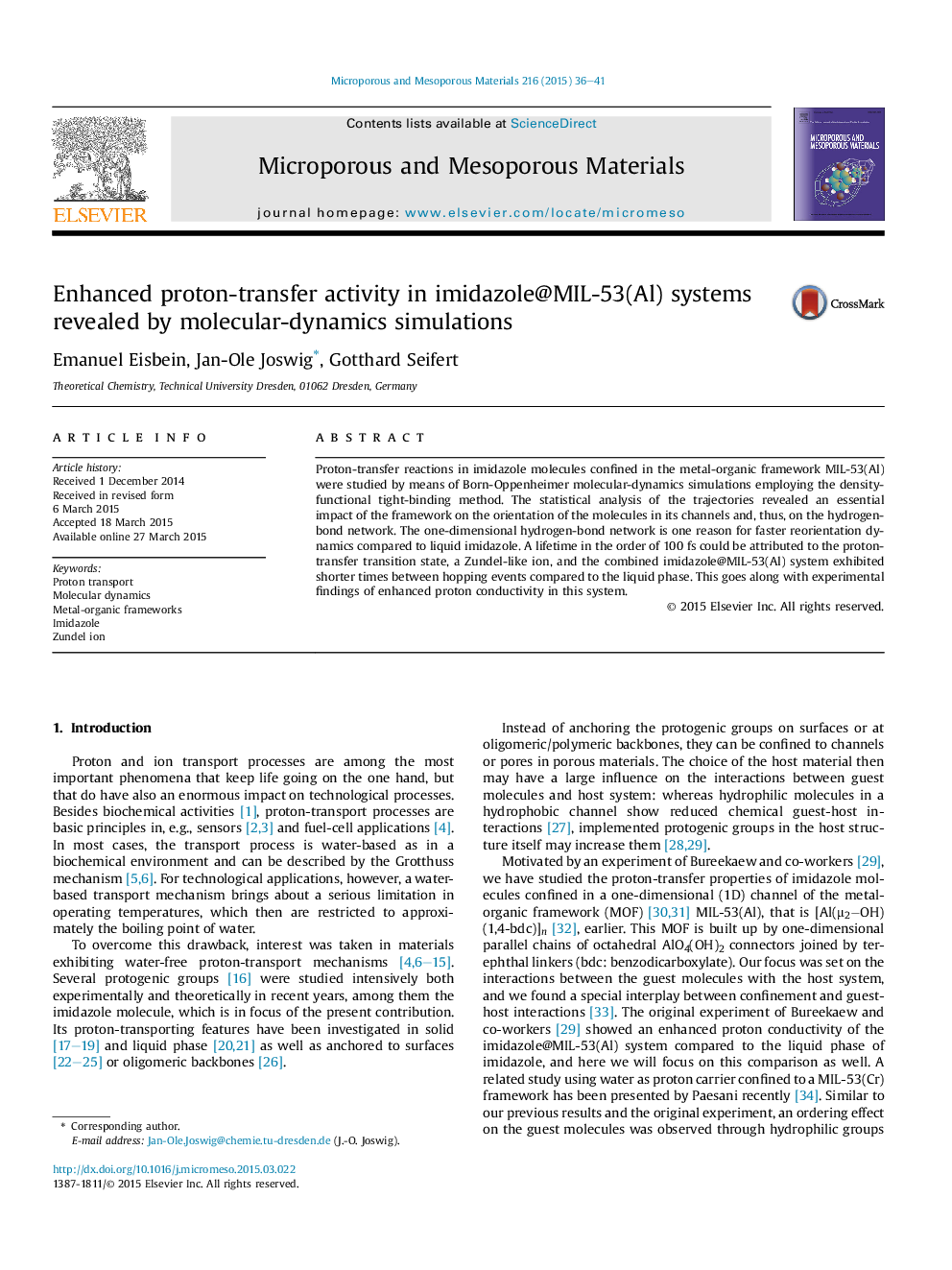| Article ID | Journal | Published Year | Pages | File Type |
|---|---|---|---|---|
| 72572 | Microporous and Mesoporous Materials | 2015 | 6 Pages |
•We model proton-transfer reactions in a combined imidazole/MOF system by density-functional based molecular dynamics.•The one-dimensional hydrogen-bond network causes faster reorientation dynamics compared to the liquid phase of imidazole.•The transition-state (Zundel ion) lifetime is estimated to be in the order of 100 fs.•The imidazole/MOF system shows shorter time lag between proton-transfer events.•All findings support very well the experimental findings of enhanced proton conductivity in this system.
Proton-transfer reactions in imidazole molecules confined in the metal-organic framework MIL-53(Al) were studied by means of Born-Oppenheimer molecular-dynamics simulations employing the density-functional tight-binding method. The statistical analysis of the trajectories revealed an essential impact of the framework on the orientation of the molecules in its channels and, thus, on the hydrogen-bond network. The one-dimensional hydrogen-bond network is one reason for faster reorientation dynamics compared to liquid imidazole. A lifetime in the order of 100 fs could be attributed to the proton-transfer transition state, a Zundel-like ion, and the combined imidazole@MIL-53(Al) system exhibited shorter times between hopping events compared to the liquid phase. This goes along with experimental findings of enhanced proton conductivity in this system.
Graphical abstractFigure optionsDownload full-size imageDownload as PowerPoint slide
